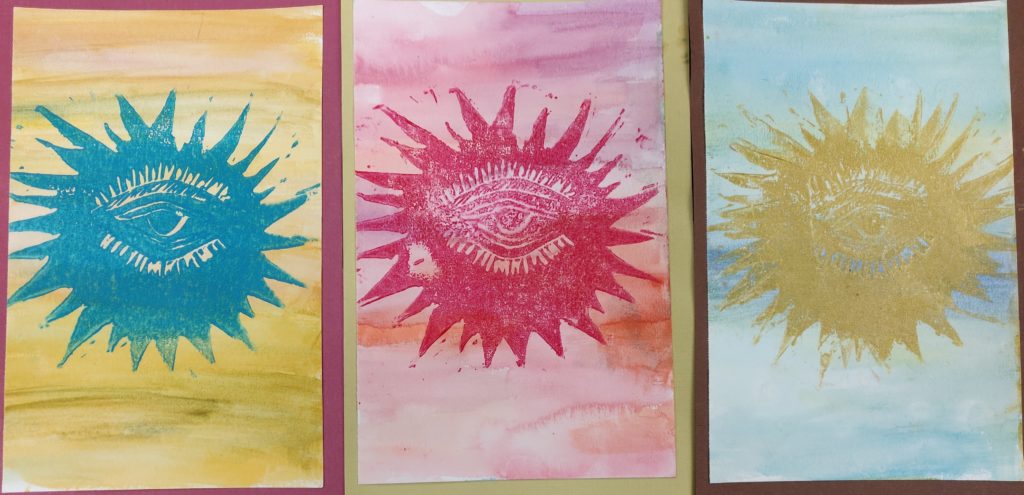The History and Popular Music of the ’70s class learned about The Stooges’ wild record from 1970. Here are some of their reactions.
If I had to choose one word to describe Fun House, I would call it hectic. Every time I listen to this album, I get lost in its wild and disorienting energy. By the time I reach the final track, I barely know where I am in the album–all the songs bleed into one another into one insane but cohesive sound. At first, this album came off to me as deceivingly simple, but as I listened more, I came to understand the purpose of that simplicity: to create a manic groove that bewitches the listener. This album would definitely lose its crazy feel if it were overcomplicated by extra lyrics or more instruments. Iggy Pop’s “25 words or less” rule definitely makes sense here and prioritizes a few words that repeat over and over to capture the listener as opposed to more words that would distract from the manic feel of the music. The same applies to the sparse instrumentation, along with the limited technical skill of the band members. The Stooges only need the foundation to capture their feel.
As a result of this meaningful simplicity, many of the tracks end up feeling more like jams than actual songs. Although most of the tracks have vocal hooks of some sort, the structureless chaos of the instrumental solos is what makes them memorable to me. For example, the song “1970” has a very clear hook, but it takes up a minuscule portion of the track compared to the guitar and saxophone solos that go completely off the rails. Additionally, you could argue that Iggy kind of “solos” with his own voice with the way he improvises and uses tiny elements of the hook in the instrumental sections. Regardless, the hook still represents an important part of the song, as, without it, it would be significantly harder to see the crazy directions that the track ends up going. This free-form structure makes the whole album feel more like a live album than a studio album, which makes sense considering the way that the band recorded the parts all together and with minimal post-production. One could argue that the “live” feeling of this album is what makes it so great, as the Stooges were well known for their live performances.
Interestingly, the songs that feel most put-together are all in the first half of the album, and the songs seem to get more insane as the album progresses. The most structured-feeling song on the album is “Loose,” which revolves around a prominent vocal hook, with less room for soloing than other songs. Personally, it was one of my favorites because of its really captivating guitar riffs, and the way that Iggy plays with the line “and I stick it deep inside.” He sounds like he’s genuinely trying to hit the notes in some iterations, while in others he totally butchers it. However, when you get to the second half of the album, the songs get noticeably longer and less structured The vocal hooks start to feel less prominent, and the saxophone comes into the mix. Iggy’s vocals start to devolve from singing into growling. On the final track, “L.A. Blues,” Iggy literally just ferociously screams, the saxophone wails and the guitar screeches. Every time I hear it, I think about how the album started, and how it somehow managed to devolve into pure insanity. I think that thought will keep me listening to this album over and over until I finally come to an understanding of some sort. – Sebastian Moreno-Comstock
Fun House reflects sounds of agony, distortion and represents a sturdy landmark in pre-punk music. My prints specifically encapsulate the song “T.V. Eye,” in the entirety of its wandering guitar and aloof lyricism. I chose to include opposing watercolor blends behind the more strict and precise borders of my print. This art follows the ambiguous feeling that comes with listening to the Stooges and replicates how I felt listening to this album. – Ingrid Lam
Fun House is a bombastic package engraved with the sounds of stage-jumping crowd-surfing. Hints of psychedelic rock jazz, and metal sprout through the blustering wave of imposing, energetic sound. Although, at times, Fun House declines into a sort of auditory violence, it always has a motive: demonstrating a total descent into madness.
Consistent with this theme, Fun House begins comparatively toned down with four simple tracks including “Down on the Street” and the powerful “Dirt” which, without diverging too much from the conventional Stooges sound, begin to temper the listeners’ palette for the treacherous journey ahead.
“1970” opens up the second side, which ominously introduces a tenor sax towards the end. The title track, “Fun House” begins with the saxophone on the sidelines, and eventually collapses into a mix of percussive and instrumental psychedelia. Then, silence. This brief pause provides what will be a final moment of solace before plummeting into the psychedelic-jazz hell of “L.A. Blues.”
Fun House’s themes are no more subdued than its lyrics or instrumentals, and similarly, it hides no secrets in text or production. However, despite its ostensible vanity, it sets a frequently unset example of simplicity and quality. The Stooges never tried to be the next Beatles, or even close. They were stage performers–spearheaded by Iggy Pop’s efforts–and their music represented those ideas to the fullest. With this in mind, the goal of Funhouse is clear-cut: recreate the perverted bombastic energy of a live Stooges performance, including the depravity, deviance and debauchery, into an epic package that looks like vinyl and sounds like napalm. – Felix Dawans
Album cover courtesy of Elektra Records

